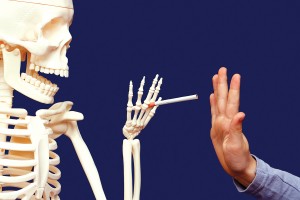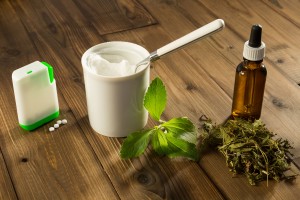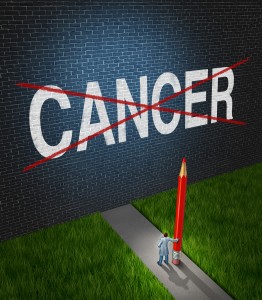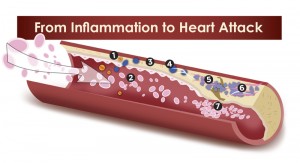Intuitively you may have noted that older folks who have very little “meat” on them are not as healthy as people of the same age with well-developed muscles.
A research team under the supervision of Dr. Preethi Srikanthan and Dr. Arun S. Karlamangla from the David Geffen School of Medicine at UCLA, Los Angeles, CA decided to measure the muscle mass index instead of the body mass index. They did this using bioelectrical impedance (simple electronic body composition bathroom scales) and they wanted to see whether there would be any correlation with regard to mortality statistics in an older population.
The study group consisted of 3659 participants from the National Health and Nutrition Examination Survey III (average age for males 55 and older, females 65 and older). The survey took place between 1988-1994. Mortality rates were computed by the end of 2004. The median length of follow-up per person was 13.2 years.
The authors of the study compared mortality curves for four subgroups of muscle mass from low to high: 0-25%, 25-50%, 50 to 75% and 75 to 100%. When the lowest muscle mass group was compared to the highest muscle mass group, there was a 20% increased mortality rate for the lowest muscle mass group.
This study had careful controls built in and could demonstrate that the difference was not due to better or worse LDL cholesterol values or triglycerides; it was not due to differences in diabetic rates or other factors. This is the first study that shows in a US based population that a lower than average muscle mass is an independent risk factor for premature death in an older population.
The authors were aware of Danish study that had previously shown that a lower muscle mass was associated with a higher mortality rate in 50 to 64 year-olds.
I like to comment regarding this study by putting it into the context of other medical findings.
1. Older people tend to have more falls
Several studies have shown over the years that older people fall more often because of a combination of balance problems with slower reaction time, and also because of poorer muscle development when compared to a younger age group. The medical costs are staggering when older people reach the age of 85 where about 20% of that subpopulation experience serious falls resulting in hip fractures and hospitalizations. There is a mortality of about 25% associated with hip fractures in that age group. And about 50% of those who survive will not be living independently at 1 year following a hip fracture. Fortunately fractures from falls can largely be prevented by making physical changes to the home to prevent tripping and having extra guard rails where needed. But another important factor is to exercise regularly within the capabilities of the older person to maintain muscle mass, which will balance the body and control upper and lower extremity strength as the person moves around.
2. Fit people live longer
A Stanford University study followed 6000 middle-aged men for 10 years and found that the fittest who exercised regularly were 12% more likely to stay alive for every metabolic equivalent; this is the energy that a sitting person uses in terms of oxygen consumption. They also found that the least fit had a 4.5-fold higher death rate within 6 years from the beginning of the study compared to the fittest.
To put this into perspective: a regular walk at less than two miles an hour would be equivalent to 2 metabolic equivalents, a brisk walk at 4 miles per hour is worth 5 metabolic equivalents and running 6 miles an hour is worth 8 metabolic equivalents. This is how the math works: a regular walk every day translates into 2×12% = 24% more likelihood of staying alive in the next 6 years compared to a sedentary person. A person exercising with a brisk walk with a speed of 4 miles per hour every day would be 5×12% = 60% more likely to be alive in 6 years compared to a sedentary person who does not exercise. Not smoking and having a normal weight would add to your probability of living longer. Pushing yourself to the extreme (running 6 miles per hour) may be problematic for the majority of us as there are issues of getting into adrenal gland insufficiency that can develop, if you over-stress yourself. (This is my comment, not part of the study).
Now you may have wondered about the woman’s side (as the previous study was an all-male study). The answer comes from a recent paper that studied 10 clinical trials throughout the world (US, Denmark, Germany, Sweden, Taiwan and Japan) involving only postmenopausal women. Yes, there is the same surprising finding that regular brisk exercise makes the women live longer with less disabilities and less mortality!
The bottom line: exercise regularly and live.
3. Exercise develops your muscles and maintains them
We were born to use our muscles daily (designed as hunter/gatherers), but in the meantime this is what we do: sitting in front of the computer or TV, in cars, in class (school, university, work) or in the movie theatre. So we need to discipline ourselves to get into a routine that balances all of the other activities. Muscle strength exercises or activities as indicated in this link are the answer.
The earlier we adopt this type of a routine, the better off we are when we reach the golden years of retirement. I am one of the examples of former non-exercisers. Apart from liking to go for long walks 3 to 4 times per week I did no formal exercises until 8 years ago when my wife and I got into ballroom and Latin dancing inspired by “Dancing with the stars”. But it is only about 2 years now that we took up regular gym workouts for 45 to 60 minutes every day. It is now easier for me to walk up on a steep hill in our neighborhood that has an 18% incline than 2 years ago. Muscles need regular exercise. You put a limb in a cast and within 3 weeks most of the muscle strength has melted away. You remove the cast and it will take 3 to 6 weeks of regular exercise to regain the muscle strength. So why not maintain your muscle strength in the first place?
4. Exercise develops cardiovascular fitness
The aerobic part of my daily exercise program (treadmill) develops cardiovascular fitness as the lungs have to work harder and the heart is being activated. Doing this regularly is mimicking going through the landscape looking for food and hunting. Of course most of us drive in our cars to the grocery store and get our food that way. So my balance is to go to the gym and at least once a day get that work-out. What can we expect from fitness training? An NIH study showed that with a moderate work-out of only 2.5 hours per week you will gain 4.5 years of life due to cardiovascular fitness. This is better than money in the account. It is free healthy additional life!
5. Sensible nutrition will help preserve muscle mass
No, I am not taking your food away. I am suggesting that we watch the quality of the food we are consuming. If you are like the average consumer, you may be eating too many carbs in form of pasta, bread, rice and potatoes. Some of you have read in past blogs that my wife and I cut out sugar and starchy foods as well as wheat since 2001. We both lost 50 pounds and kept it down. I know that if I would restart sugar and starchy foods, my fat content would go up, my muscle content down and the BMI up. How do I know? I weigh myself every day on body composition scales (which works by the principal of bioelectrical impedance analysis), which show all of these indicators. Recently I got into some organic Bing cherries. They were delicious, but it also is a fruit with significant sugar content! Within a day I knew that I’d better watch the quantities I consume (fat composition was up, muscles mass down). It took 3 days for my values to be back to normal.
When it comes to muscle mass, overconsumption of refined carbs is one problem; however, our bodies do need quality lean meat and some fish (salmon, mackerel; low mercury fish) as a source of protein. I buy organic meats to get away from the problem of pesticide pollution as much as possible. Some people like vegan food, they may need to supplement with protein supplements.
Conclusion:
It may sound like common sense that a body with well-developed muscles will live longer. You may want to compare this to a well-maintained car (less rust, good maintenance) and the car will still drive well once it has a high mileage.
We have bodies that need maintenance (exercise) and good nutrition (no junk food, sensible diet). If we make this our regular lifestyle, we will develop and maintain muscles. It will keep us in the group with a lower mortality rate compared to sessile persons and junk food consumers.
Nothing happens without any effort. We need to earn muscle fitness for ourselves! Think about it, improve where you need to improve and then maintain it. More than anything else this will pay dividends well into your future.
More information on:
1. Exercise (fitness): http://nethealthbook.com/health-nutrition-and-fitness/fitness/
2. Arteriosclerosis (hardening of the arteries and how to avoid it): http://nethealthbook.com/cardiovascular-disease/heart-disease/atherosclerosis-the-missing-link-between-strokes-and-heart-attacks/
Last edited Nov. 8, 2014















